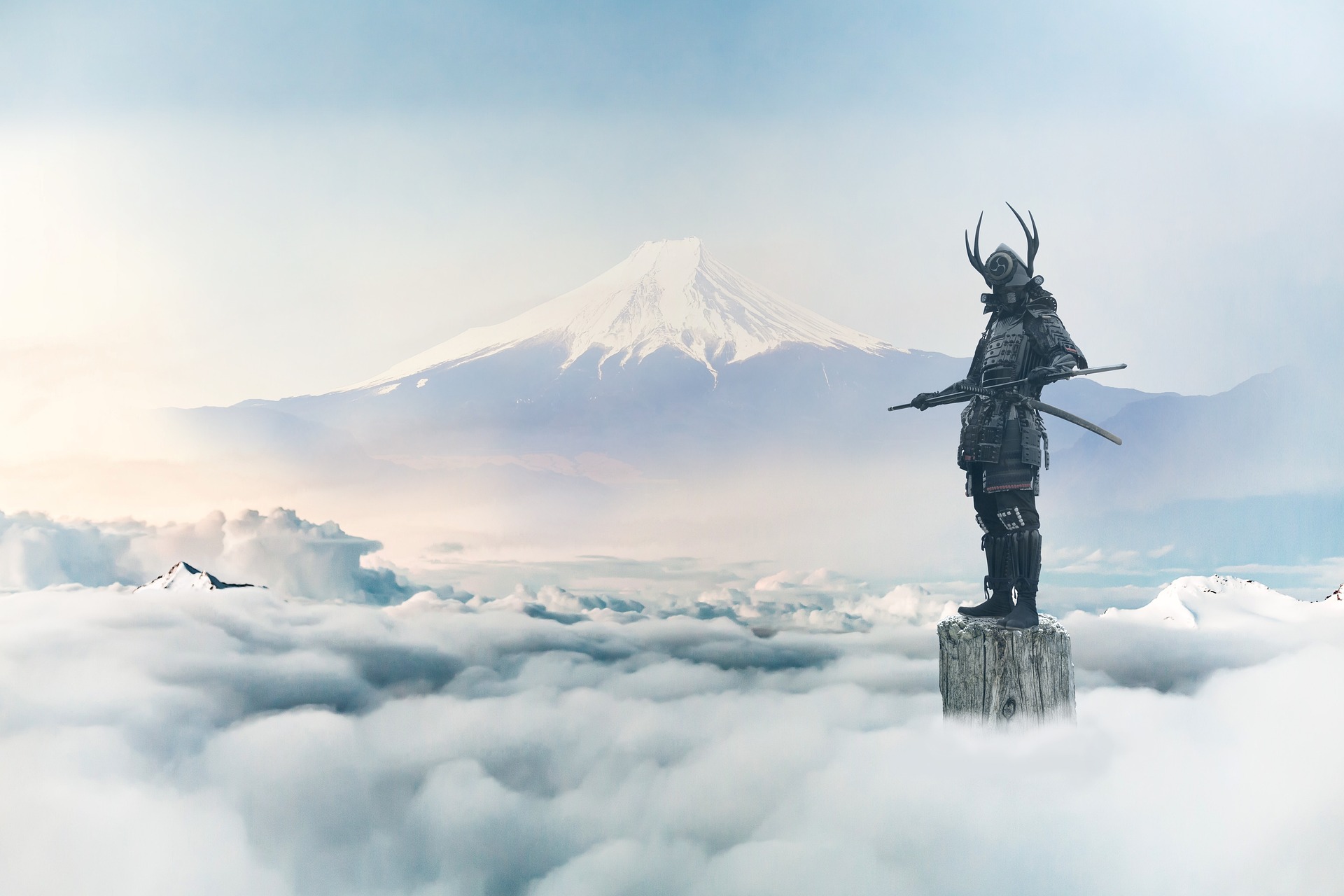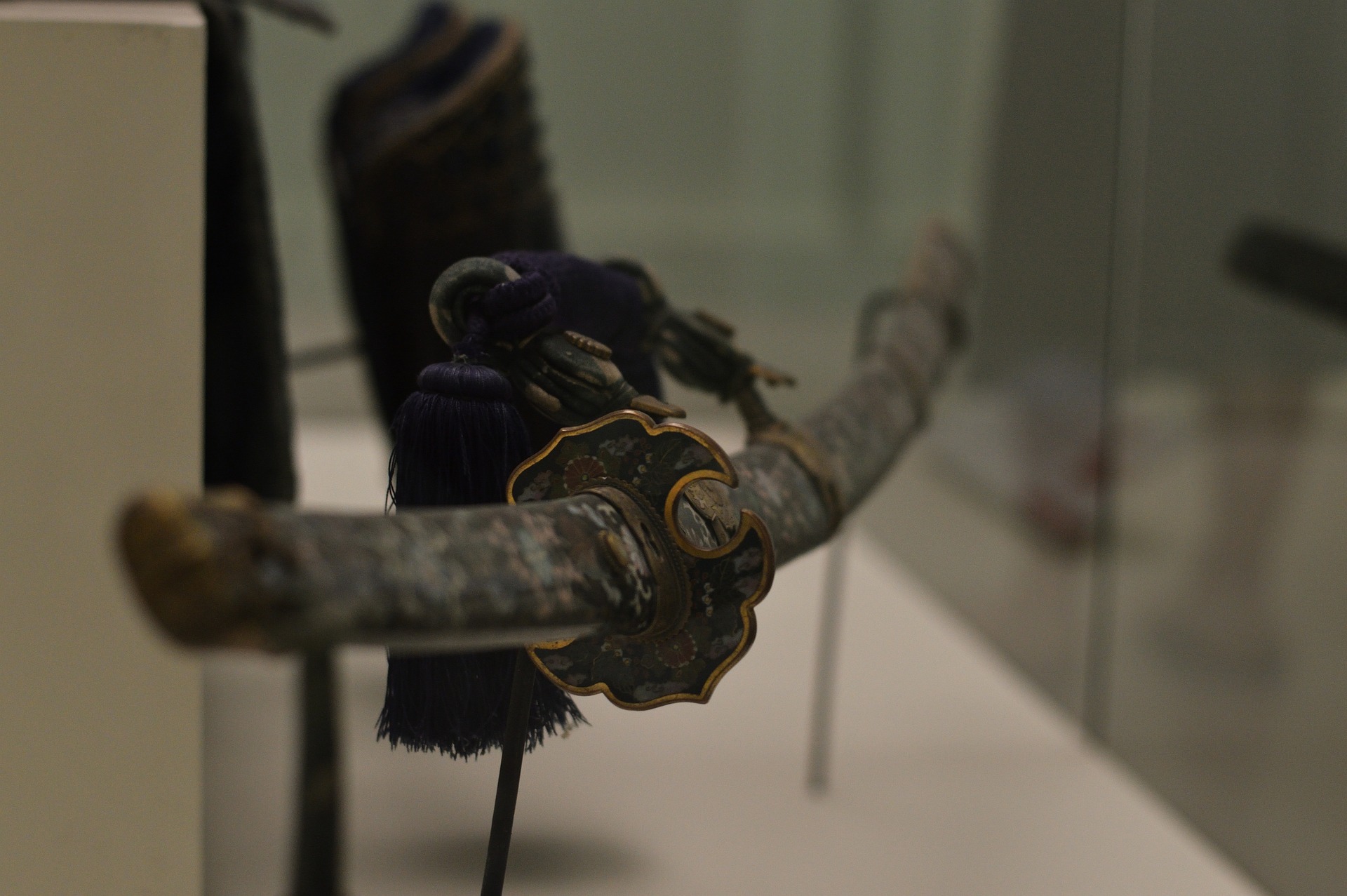Overview of the Series
"Rurouni Kenshin: Meiji Swordsman Romantic Story" is a celebrated manga and anime series created by Nobuhiro Watsuki. The series, also known simply as "Rurouni Kenshin," debuted in 1994 and has since become a cornerstone of the anime and manga community. It chronicles the adventures of Himura Kenshin, a wandering swordsman with a dark past. Once known as Battousai the Manslayer, Kenshin now vows to protect the innocent without taking another life. The series masterfully blends action, historical context, and deep emotional storytelling, making it a timeless classic in the genre.
Background and Context in the Meiji Era
Set during the early Meiji period of Japan, "Rurouni Kenshin" offers a rich historical backdrop that significantly influences its narrative and characters. The Meiji era was a time of profound change in Japan, transitioning from the feudal Edo period to a more modernized society. This setting allows the series to explore themes of redemption, the clash between old samurai traditions and new governmental reforms, and the personal struggles of those who lived through these turbulent times. Kenshin’s journey reflects the broader societal transformations of the era, providing a unique blend of historical insight and dramatic storytelling.
Initial Reception and Enduring Popularity
Upon its release, "Rurouni Kenshin" quickly captured the hearts of audiences and received widespread acclaim for its compelling characters, intricate plotlines, and stunning artwork. The manga serialized in Shueisha's Weekly Shonen Jump from 1994 to 1999, and the anime adaptation aired from 1996 to 1998, further solidifying its popularity. The series has since spawned numerous OVAs, live-action films, and spin-off stories, each contributing to its enduring legacy. Fans and critics alike have praised its depth, engaging story arcs, and the moral complexities faced by its characters. The series continues to attract new viewers and readers, maintaining a strong fanbase and influence in the anime and manga community.
Conclusion
"Rurouni Kenshin: Meiji Swordsman Romantic Story" stands as a quintessential example of how anime and manga can effectively combine historical context with captivating storytelling. Its exploration of redemption, the personal growth of its characters, and the rich depiction of the Meiji era have left an indelible mark on the genre. As it continues to be celebrated and revisited through various adaptations, "Rurouni Kenshin" remains a beloved series that resonates with audiences worldwide.
For more detailed information, you can visit the official Rurouni Kenshin website.
Contents
Plot Synopsis and Key Themes
 Detailed Summary of the Main Plot
Detailed Summary of the Main Plot
"Rurouni Kenshin: Meiji Swordsman Romantic Story" follows the journey of Himura Kenshin, a former assassin known as Battousai the Manslayer, who has taken a vow to never kill again. Set in the early Meiji period, Kenshin wanders Japan as a rurouni (wanderer), offering protection and aid to those in need while seeking redemption for his violent past. He eventually settles at a dojo run by Kamiya Kaoru, forming deep bonds with her and other characters, such as Sagara Sanosuke, Myojin Yahiko, and Takani Megumi. The series weaves together Kenshin's battles against old enemies and new threats, exploring his internal struggles and his efforts to uphold justice without reverting to his deadly ways.
Exploration of Central Themes
- Redemption: The core of Kenshin's journey is his quest for redemption. Haunted by his past as an assassin, Kenshin's resolve to atone for his sins drives the narrative. This theme resonates with viewers as it portrays the universal struggle for forgiveness and the desire to make amends.
- Peace vs. Violence: Kenshin's vow to never kill again highlights the theme of peace versus violence. Throughout the series, he faces adversaries who challenge his ideals, forcing him to balance his commitment to non-violence with the necessity to protect others. This theme underscores the moral complexities of using violence to achieve peace, a dilemma that remains relevant today.
- Clash Between Old and New Japan: Set during the Meiji Restoration, the series vividly depicts the transition from the feudal Edo period to modern Japan. The clash between old samurai traditions and new governmental reforms is personified in Kenshin's character and his interactions. This historical context adds depth to the story, emphasizing the struggle between preserving cultural heritage and embracing progress.
How These Themes Resonate with Modern Audiences
The themes of "Rurouni Kenshin" continue to resonate with modern audiences due to their timeless nature. Kenshin's journey of redemption and his internal battle between peace and violence reflect universal human experiences and ethical dilemmas. The historical setting, while specific to Japan, parallels broader global themes of societal change and cultural preservation. The series' ability to address these profound themes through compelling storytelling and character development has ensured its enduring popularity and relevance.
Conclusion
"Rurouni Kenshin: Meiji Swordsman Romantic Story" offers more than just thrilling sword fights and historical intrigue. Its exploration of redemption, peace, and the clash between old and new Japan provides a rich, thought-provoking narrative that continues to captivate audiences. The series' success lies in its ability to blend action with deep emotional and moral questions, making it a beloved classic in the world of anime and manga.
For more detailed information, you can visit the official Rurouni Kenshin website.
Character Development and Relationships
In-depth Look at the Protagonist, Himura Kenshin
Himura Kenshin, the central character of "Rurouni Kenshin: Meiji Swordsman Romantic Story," undergoes significant character development throughout the series. Initially introduced as a wandering swordsman with a dark past, Kenshin's evolution is marked by his transition from the feared assassin known as Battousai the Manslayer to a protector who vows never to kill again. This transformation is driven by his deep remorse for his actions during the Bakumatsu period and his desire to atone for his sins by using his skills to defend the innocent and uphold justice without resorting to lethal force. His internal struggle with his violent past and commitment to a peaceful future forms the crux of his character arc, making him a complex and compelling protagonist.
Analysis of Key Relationships
- Kaoru Kamiya: Kaoru is the headstrong and kind-hearted dojo owner who becomes one of Kenshin's closest allies and love interest. Their relationship starts with mutual respect and evolves into deep affection. Kaoru's unwavering belief in Kenshin's potential for good plays a pivotal role in his journey towards redemption. Her dojo becomes a place of refuge and belonging for Kenshin, symbolizing the life he hopes to build away from violence.
- Sanosuke Sagara: Sanosuke, initially introduced as a street fighter with a grudge against the government, becomes one of Kenshin's loyal companions. Their relationship is built on mutual respect and camaraderie. Sanosuke's straightforward, brash nature complements Kenshin's more introspective demeanor. Together, they face numerous challenges, with Sanosuke often providing the muscle and Kenshin the strategic mind.
- Megumi Takani: Megumi is a doctor with a troubled past who finds solace and redemption through her association with Kenshin and his friends. Her initial interactions with Kenshin are marked by suspicion and guilt over her involvement with opium production. However, as she works alongside him, she finds a new purpose in using her medical skills to help others. Her journey parallels Kenshin's in many ways, as both seek to atone for their past actions.
Introduction to Significant Antagonists
- Shishio Makoto: Shishio is one of the most formidable adversaries Kenshin faces. A former assassin who was betrayed and left for dead, Shishio seeks to overthrow the Meiji government. His philosophy of survival of the fittest starkly contrasts with Kenshin's belief in protecting the weak. Shishio's presence forces Kenshin to confront the darker aspects of his past and the consequences of his actions.
- Enishi Yukishiro: Enishi is another key antagonist whose personal vendetta against Kenshin stems from a tragic family history. Driven by revenge for the death of his sister, Tomoe, who was Kenshin's wife, Enishi's quest for vengeance brings emotional and psychological challenges to Kenshin. This conflict highlights themes of forgiveness, guilt, and the far-reaching impacts of one's actions.
Conclusion
The intricate web of relationships and character dynamics in "Rurouni Kenshin: Meiji Swordsman Romantic Story" enriches the narrative, providing depth and emotional resonance. Kenshin's interactions with key characters like Kaoru, Sanosuke, and Megumi, along with the challenges posed by formidable antagonists such as Shishio and Enishi, drive his journey of redemption and self-discovery. These relationships and conflicts not only shape Kenshin's evolution but also underscore the series' central themes of peace, forgiveness, and the struggle between old and new values.
For more detailed information, visit the official Rurouni Kenshin website.
Visuals and Artistic Style
 Artistic Review of the Series, Highlighting Nobuhiro Watsuki's Unique Style
Artistic Review of the Series, Highlighting Nobuhiro Watsuki's Unique Style
Nobuhiro Watsuki's artistic style in "Rurouni Kenshin: Meiji Swordsman Romantic Story" is both distinctive and influential, contributing significantly to the series' enduring popularity. Watsuki's drawings are characterized by their meticulous attention to detail and dynamic action sequences. His ability to blend realism with stylized aesthetics helps in bringing the Meiji era to life, capturing both the historical essence and the vibrant energy of the period. The characters are designed with expressive features that convey a wide range of emotions, enhancing the narrative depth and making the characters relatable and memorable.
Watsuki's use of line work is particularly notable. His clean, precise lines create a sense of movement and fluidity, especially in the sword-fighting scenes, which are both elegant and intense. The intricate designs of Kenshin's signature "sakabato" (reverse-blade sword) and the various period-specific costumes reflect the cultural and historical setting of the series, adding layers of authenticity to the storytelling.
Discussion of Animation Quality in Various Adaptations
The animation quality of "Rurouni Kenshin" has seen various adaptations over the years, each bringing its unique flair to Watsuki's original artwork. The 1996 TV series, produced by Studio Gallop and DEEN, is often praised for its faithful adaptation of the manga's visual style. The fluid animation and vibrant color palette brought the manga panels to life, particularly in the action scenes where Kenshin's swift movements are depicted with stunning clarity and speed.
In contrast, the OVA series "Trust & Betrayal," produced by Studio DEEN, took a darker and more mature visual approach. The animation quality is exceptionally high, with a focus on realistic and gritty art that matches the serious tone of the story. This OVA is renowned for its cinematic quality, using a more subdued color palette and detailed backgrounds to enhance the dramatic impact of Kenshin's backstory.
The recent live-action adaptations have also contributed to the visual legacy of "Rurouni Kenshin." These films incorporate cutting-edge CGI and practical effects to recreate the dynamic sword fights and period settings. The choreography of the action scenes, combined with the detailed set designs, successfully translates the manga's aesthetic into a live-action format, maintaining the series' visual integrity while introducing new cinematic techniques.
Key Scenes and Artistic Techniques That Stand Out
Several key scenes in "Rurouni Kenshin" stand out due to their artistic excellence. One notable example is Kenshin's battle with Shishio Makoto. This climactic fight is a masterclass in animation and choreography, showcasing fluid movements, intense close-ups, and dramatic angles that heighten the tension and excitement. The use of slow motion during critical strikes adds to the impact, making each blow feel significant.
Another standout scene is Kenshin's reflection on his past as Battousai. These moments often utilize a softer, more melancholic color scheme, with intricate shading and light effects to convey his internal turmoil and desire for redemption. The juxtaposition of these quiet, introspective scenes with the high-octane action sequences highlights the series' ability to balance emotional depth with thrilling entertainment.
The artistic technique of using traditional Japanese elements, such as ukiyo-e inspired backgrounds and calligraphic text overlays, further enriches the visual experience. These techniques not only pay homage to Japan's artistic heritage but also enhance the historical setting of the series, making the visuals an integral part of the storytelling.
In conclusion, the visuals and artistic style of "Rurouni Kenshin: Meiji Swordsman Romantic Story" are a testament to Nobuhiro Watsuki's creative vision and the skill of the various animation studios that have brought his work to life. The combination of detailed character designs, dynamic action scenes, and thoughtful use of traditional artistic elements creates a rich and immersive visual experience that continues to captivate audiences worldwide.
For more detailed information, visit the official Rurouni Kenshin website.
Audience Reception and Cultural Impact
Reception by Fans and Critics Over the Years
Since its debut, "Rurouni Kenshin: Meiji Swordsman Romantic Story" has garnered widespread acclaim from both fans and critics. The series, created by Nobuhiro Watsuki, first appeared as a manga serialized in Shueisha's Weekly Shōnen Jump from 1994 to 1999. It quickly became a beloved classic, praised for its compelling storytelling, deep character development, and historical context set in the Meiji era.
Critics have lauded the series for its ability to balance intense action scenes with poignant moments of introspection and growth. The protagonist, Himura Kenshin, with his complex past as a former assassin seeking redemption, has resonated deeply with audiences. Fans appreciate the intricate blend of historical accuracy with engaging fiction, which brings the Meiji era to life while exploring themes of peace, atonement, and the clash between old and new Japan.
The anime adaptation, which aired in the late 1990s, further cemented its status in popular culture. The series’ faithful adaptation of the manga, combined with a memorable soundtrack and high-quality animation, won it a loyal fanbase that continues to grow with each new generation of anime enthusiasts.
Impact on the Anime and Manga Industry
"Rurouni Kenshin" has had a significant impact on the anime and manga industry. It played a pivotal role in popularizing historical and samurai-themed stories in the shōnen genre, influencing numerous other works that followed. The series' success demonstrated that historical settings combined with rich character narratives could captivate a broad audience, paving the way for other series with similar themes.
Moreover, the live-action film adaptations released in the 2010s brought renewed interest and visibility to the franchise. These films, praised for their faithful representation of the source material and high production values, introduced "Rurouni Kenshin" to a wider, international audience. The successful blending of CGI and practical effects to depict Kenshin's acrobatic swordsmanship set a new standard for live-action adaptations of manga and anime.
The series has also been credited with influencing other creators and works within the industry. Its unique approach to combining historical elements with fictional storytelling has inspired a variety of manga and anime, further solidifying its legacy as a cornerstone of Japanese pop culture.
Future Expectations and Potential Developments in the Franchise
Looking forward, "Rurouni Kenshin" continues to have a vibrant and promising future. The enduring popularity of the series suggests that there are ample opportunities for further adaptations and expansions of the franchise. Fans eagerly anticipate new content, whether it be additional manga arcs, anime seasons, or live-action films.
The recent announcement of new projects within the "Rurouni Kenshin" universe has generated considerable excitement. These include potential continuations of the story, exploring different characters and their backstories, and possibly even spin-offs that delve deeper into the rich world Nobuhiro Watsuki has created.
In summary, "Rurouni Kenshin: Meiji Swordsman Romantic Story" remains a seminal work in the anime and manga landscape. Its profound impact on fans and the industry at large underscores its importance, and the future of the franchise looks bright with ongoing interest and new developments on the horizon.
For more detailed information, visit the official Rurouni Kenshin website.



